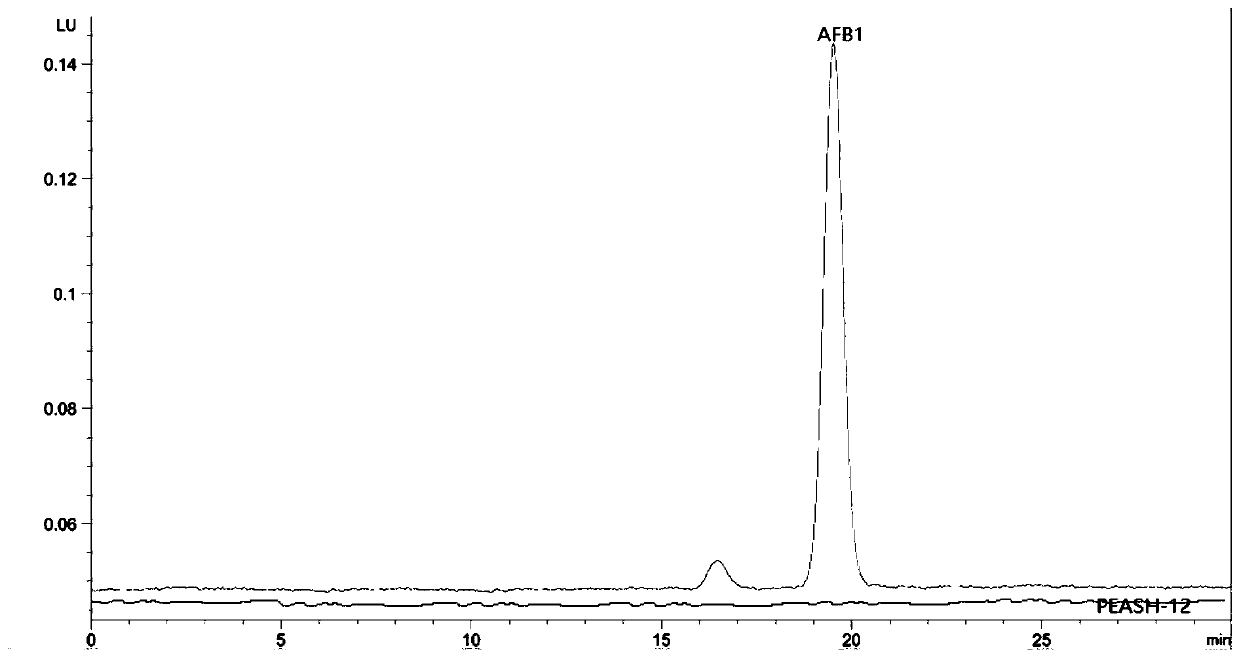Aspergillus flavus PEASH-12 not producing aflatoxin and application of aspergillus flavus
A technology of aflatoxin and aflatoxin, applied in the field of microorganisms, can solve the problems of poor field application effect, low survival rate, and poor adaptability, and achieve significant pollution effects, disease reduction, and rapid growth
- Summary
- Abstract
- Description
- Claims
- Application Information
AI Technical Summary
Problems solved by technology
Method used
Image
Examples
Embodiment 1
[0028] 1. Isolation, purification and identification of strains
[0029] 1. Sample collection: Samples were collected at the peanut planting site (collected in the Hongqi branch of the Jiangxi Provincial Fine Breed Breeding Farm in 2018.05), and each sample (100g) took 5 sub-samples (2cm wide) within the range of 10×10m by the diagonal method , 5cm deep soil), mixed as a sample. Put the collected samples into plastic bags, prick some pinholes to facilitate gas exchange, transport them to the laboratory, and store them at 4°C for screening of Aspergillus flavus.
[0030] 2. Isolation and purification of bacterial strains.
[0031] (1) Preparation of soil sample bacterial suspension
[0032] Take 10g soil sample, add 90mL 0.1% peptone sterile water (w / v), shake at room temperature for 30min, and make 10 -1 bacterial suspension; then take 0.5mL 10 -1 Add 4.5mL 0.1% peptone sterile water to the bacterial suspension to prepare 10 -2 Bacteria suspension of dilution; prepare 10 ...
Embodiment 2
[0058] The inhibitory effect of embodiment 2 bacterial strain PEASH-12 to toxin-producing Aspergillus flavus
[0059] 1. Laboratory inhibition test
PUM
 Login to View More
Login to View More Abstract
Description
Claims
Application Information
 Login to View More
Login to View More - R&D
- Intellectual Property
- Life Sciences
- Materials
- Tech Scout
- Unparalleled Data Quality
- Higher Quality Content
- 60% Fewer Hallucinations
Browse by: Latest US Patents, China's latest patents, Technical Efficacy Thesaurus, Application Domain, Technology Topic, Popular Technical Reports.
© 2025 PatSnap. All rights reserved.Legal|Privacy policy|Modern Slavery Act Transparency Statement|Sitemap|About US| Contact US: help@patsnap.com



